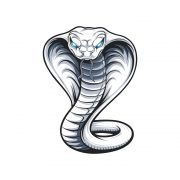Is there a cobra in the dryer?
A windsock shaped like a hot air balloon with a spiral tail is suspended above our backyard deck. When the wind blows, the balloon spins, and the spiral twirls below it, catching my eye when I walk past the window.
Maybe I notice that spiraling tail because the windsock isn’t the only thing around here that spins. I do it, too, except my version isn’t nearly as pretty. Unlike the windsock, my spiral is powered by thoughts — random ones, weird ones, and scary ones.
Here’s an example of how it happens. The other day, I was folding a warm load of towels I’d just scooped out of the dryer. Just a normal chore on a normal day full of mostly normal thoughts. But then one thought went rogue and offered up a disturbing “what if.” I don’t even remember the specifics of it now, but in the moment, it was so bad that my brain latched on and ran with it. I imagined the shock, the fallout and the grief. Within moments, my throat tightened, my stomach felt sick, and tears were in my eyes.
If my husband had walked into the room then, he would’ve said, “What happened?” And the truthful answer would’ve been this: In reality, absolutely nothing. Inside my mind, soul-crushing tragedy.
A few minutes in, I noticed the absurdity of it. Then I went from miserable straight to mad. Why do I do this to myself? How is it possible that one crazy thought, like a sudden gust of wind, can send me on an anxiety spiral so intense that my body reacts as if that imagined scenario were actually happening?
I decided to look into it. I figured if I better understood how anxiety works in the brain, I might get better at stopping the spiral before it picks up speed. I consulted a new book written by Martha Beck called “Beyond Anxiety.” Beck is an American sociologist, life coach, and a person Oprah Winfrey once called “one of the smartest women I know.”
In a CNN interview about her book, Beck explained the difference between fear and anxiety. “Healthy fear is a response to something dangerous that we experience as an intense burst of energy that subsides almost immediately when the danger passes. Anxiety is a response to our thoughts. We feel fear responses to things that are not present, may not have happened, may never happen. The feelings can linger even when we’re completely safe. Anxiety is like being haunted.”
The word “haunted” feels particularly accurate to me. But why does this happen? Beck says it’s because the human brain has a “negativity bias,” which means we’re constantly looking for potential threats. She illustrates it by saying that if you walk into a room where there are 15 puppies and 1 cobra, your attention will shoot straight toward that cobra. We pay attention to what scares us.
 But sometimes, that cobra is just a random thought that slithers across your mind. Or an elaborate “what if.” Beck says, “…humans are the only animal that can take an imagined fear and turn it into a consistent, sustained experience of anxiety.”
But sometimes, that cobra is just a random thought that slithers across your mind. Or an elaborate “what if.” Beck says, “…humans are the only animal that can take an imagined fear and turn it into a consistent, sustained experience of anxiety.”
So, how do we sidestep the anxiety spiral? That’s a longer story than one column can explain, so I’ll let the book do the teaching. But here are three important things I learned from reading it.
- You can’t horsewhip your anxiety into submission. Self-criticism won’t work. Researchers estimate that we have more than 6,000 thoughts per day. A few of them are bound to be startling, but we can choose not to feed those thoughts more of our attention and time.
- Try treating anxiety the same way you’d treat a small, frightened kitten who showed up on your doorstep during a thunderstorm. Keep in mind that this kitten has just been fully freaked out by a cobra. Use a calm, gentle voice. Slow movements. Kind words. Deep breaths. Give it time and space. Tell her she’s safe.
- Finally, remember that anxiety is produced in the left hemisphere of the brain (which thinks it’s correct about everything even when it’s not.) So, do something that forces your brain to use the right hemisphere, which likes to solve problems using creativity and inventiveness. The human brain turns off anxiety when it turns on creativity. Artistic masterpieces aren’t necessary here. Just use your hands to make something (even a sandwich and a jigsaw puzzle would work). It’ll help your right brain work its magic while your anxious left brain backs off to let you rest and reset.
From one cobra tamer to another, may we all be kind to our wild and precious minds. As author and former world champion athlete Dan Millman once said, “You don’t have to control your thoughts. You just have to stop letting them control you.”
Gwen Rockwood is a syndicated freelance columnist. Email her at gwenrockwood5@gmail.com. Her book is available on Amazon.
